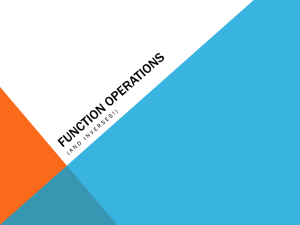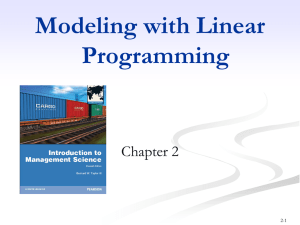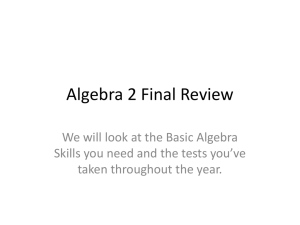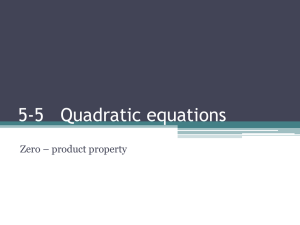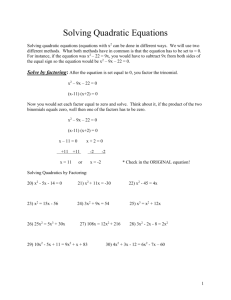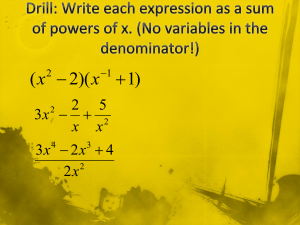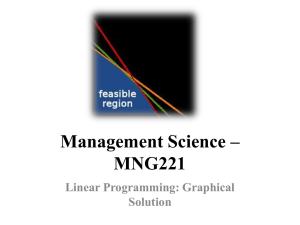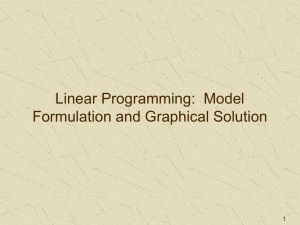Linear Programming: Model Formulation and Graphical Solution
advertisement
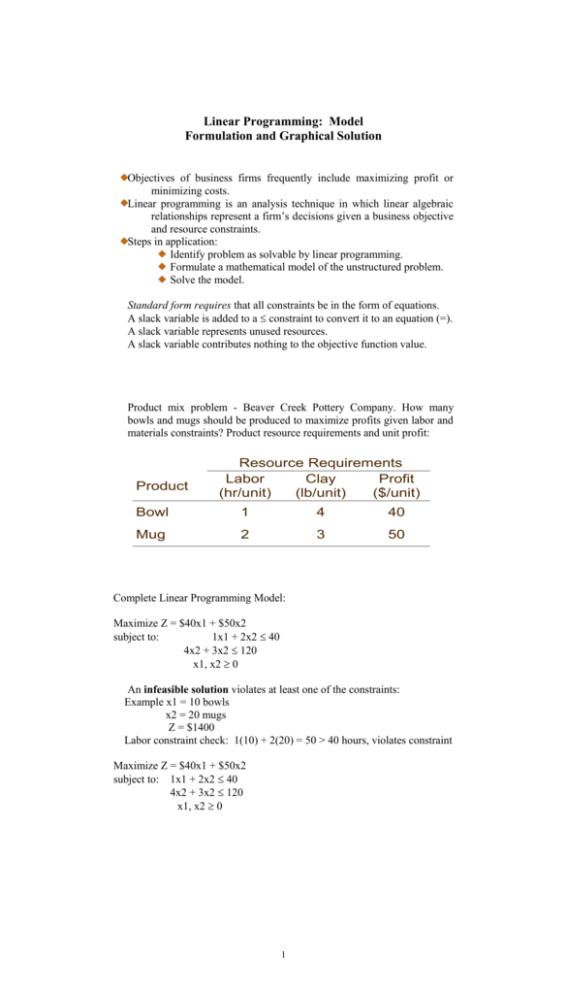
Linear Programming: Model Formulation and Graphical Solution Objectives of business firms frequently include maximizing profit or minimizing costs. Linear programming is an analysis technique in which linear algebraic relationships represent a firm’s decisions given a business objective and resource constraints. Steps in application: Identify problem as solvable by linear programming. Formulate a mathematical model of the unstructured problem. Solve the model. Standard form requires that all constraints be in the form of equations. A slack variable is added to a constraint to convert it to an equation (=). A slack variable represents unused resources. A slack variable contributes nothing to the objective function value. Product mix problem - Beaver Creek Pottery Company. How many bowls and mugs should be produced to maximize profits given labor and materials constraints? Product resource requirements and unit profit: Product Resource Requirements Labor Clay Profit (hr/unit) (lb/unit) ($/unit) Bowl 1 4 40 Mug 2 3 50 Complete Linear Programming Model: Maximize Z = $40x1 + $50x2 subject to: 1x1 + 2x2 40 4x2 + 3x2 120 x1, x2 0 An infeasible solution violates at least one of the constraints: Example x1 = 10 bowls x2 = 20 mugs Z = $1400 Labor constraint check: 1(10) + 2(20) = 50 > 40 hours, violates constraint Maximize Z = $40x1 + $50x2 subject to: 1x1 + 2x2 40 4x2 + 3x2 120 x1, x2 0 1 2 3 Ex2 Two brands of fertilizer available - Super-Gro, Crop-Quick. Field requires at least 16 pounds of nitrogen and 24 pounds of phosphate. Super-Gro costs $6 per bag, Crop-Quick $3 per bag. Problem: How much of each brand to purchase to minimize total cost of fertilizer given following data ? Chemical Contribution Nitrogen (lb/bag) Phosphate (lb/bag) Super-gro 2 4 Crop-quick 4 3 Brand Minimize Z = $6x1 + $3x2 + 0s1 + 0s2 subject to: 2x1 + 4x2 – s1 = 16 4x2 + 3x2 – s2 = 24 x1, x2, s1, s2 0 4 5

